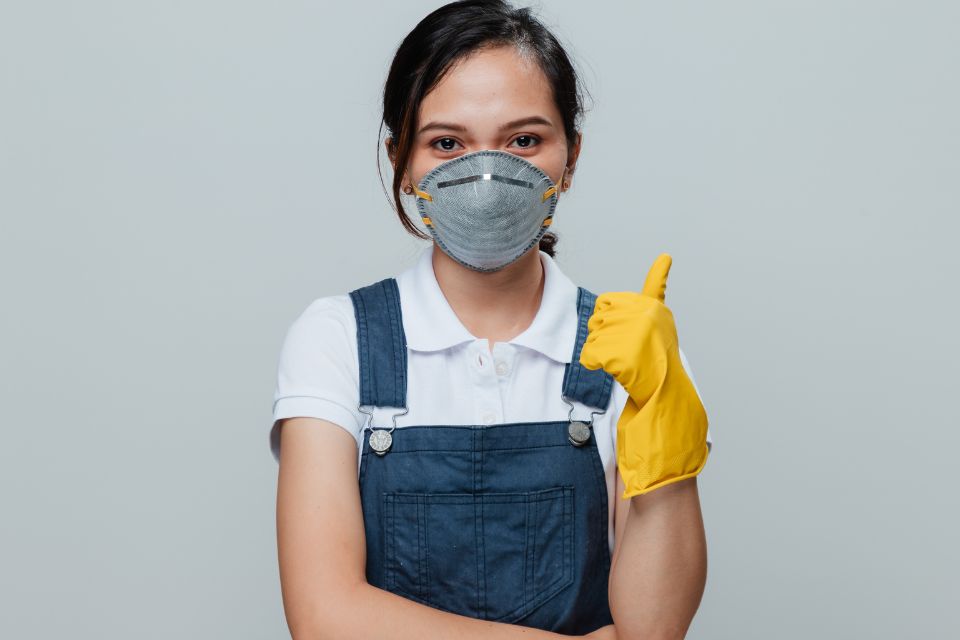How to Adapt Your Wellness Habits During the Coronavirus Crisis
The COVID-19 pandemic has profoundly impacted every area of our lives. At first glance, individual weight loss and wellness habits appear to be a relatively small part of that impact, in contrast to public health and economic outcomes. However, our habits and perspectives make a significant difference in our day-to-day quality of life, as well as our long-term health.
What changes have taken place regarding Americans’ wellness and weight loss in the past few months? How will these changes shape our individual and collective futures?
A survey of 1,000 Americans conducted in April by Phentermine.com examined these topics in detail. [1]
40% of Americans Are Less Focused on Weight Loss
In light of immediate global concerns, 40% of Americans claim to be less focused on weight loss now than they were prior to the pandemic. Especially people with an obese BMI were likely to report a decreased interest in weight loss. Yet 28% of survey respondents found themselves more concerned currently with weight loss, perhaps due to pandemic-related weight gain.
Steep Increase in Home-Cooked Meals
Thanks to restaurant closures and stay-at-home orders, 44.7% of those surveyed (young adults in particular) are making more home-cooked meals.
In spite of the shifting perspectives on the importance of weight loss, most Americans report that their diet has either remained the same or improved during the global shutdown. Only 21% of survey respondents say that they’re eating worse now than they were prior to the outbreak. With 20% of respondents claiming to have increased their snacking and grazing.
75% of Americans Adopted New Wellness-Related Habits
Americans place an added focus on mental happiness and self-care, with more than 75% claiming to have adopted at least one new wellness-related habit during COVID-19.
27% of those surveyed report that they are sleeping more thanks to increased downtime. The study also showed an uptick in self-care habits such as practicing yoga, drinking tea, and performing cardio workouts.
It’s worth noting that older respondents and those with an overweight/obese BMI were more likely to report a decrease in physical activity.
What Does This Mean for You?
We can use the results of this survey to reflect on how our own habits and perspectives have changed due to coronavirus and to avoid some of the common pitfalls the data illustrates. Awareness is key in habit change and formation [2]. Consider implementing the following suggestions where appropriate:
1. Cook More Meals
This is an ideal time to improve your kitchen’s functionality and organization, work on your cooking skills, and enlist your family in making home-cooked meals. If you’re already doing this, keep going! It’s one of the best ways to stay fit and nourished no matter the circumstances [3].
If you’re intimidated by the thought of cooking, consider trying an online cooking class or course or explore meal kit options for a beginner-friendly way to gain new skills.
2. Follow a Snacking Schedule
When you’re at home surrounded by snacks, with no external routine imposed by work or other responsibilities, excessive snacking feels inevitable. Unfortunately, most snack foods are high in fat, sugar, and sodium. This means blood sugar crashes, decreased satiety, and potential digestive disturbances.
While cutting out treats completely is likely to backfire, consider creating a snacking schedule to help minimize overconsumption. Other rules, such as only eating at the table while sitting down or not eating after dinner, can help to curb poor habits as well. Make sure to eat balanced, filling meals to satisfy your body’s macro and micronutrient needs.
This might be a good time to work remotely with a dietician, nutrition coach, or doctor to help you determine appropriate portion sizes and calorie limits for your individual health goals. Outside guidance and supervision can feel particularly helpful when life seems so chaotic.
3. Minimize Reliance on Takeout
Some respondents reported an increased reliance on takeout and food delivery due to restaurant closures. While this isn’t an entirely bad habit, takeout is more likely to contain high levels of sodium, saturated fat, sugar, and refined carbs. Try to choose healthier delivery options, and don’t make it a daily habit. Even just the simple act of checking the calories of your favorite takeout meals can be eye-opening. Try splitting a meal with another household member or dividing it up into two meals to minimize the caloric impact.
4. Get Creative With Canned, Frozen, and Shelf Stable Foods
Individuals surveyed reported that their food decisions are currently impacted by the limited ability of fresh foods (and concern about potential contamination of fresh foods). Fortunately, you can still eat a healthy diet even if you’re relying on packaged foods. Stock up on frozen vegetables and lean proteins, canned beans, and dried whole grains and make them the focal points of your diet, treating fresh produce and dairy as garnishes to add flavor and interest.
5. Consider Increasing Your Activity
It’s easy to be sedentary while at home, and you may need to push yourself to stay active. Employ the many online workout resources available now and work to find a style of workout that you enjoy (or at least don’t hate!).
According to survey results, this is especially important if you’re older, overweight, or obese, as you may be less likely to pursue fitness without some additional encouragement and motivation.
Many fitness professionals are offering remote video sessions if you need accountability and guidance.
6. Set a Daily Step Goal
Inactivity stems naturally from a more home-based lifestyle. Unless you live in a gigantic house, you simply don’t need to move around as much as you normally would to complete your daily responsibilities. This takes its toll on our mental and physical health.
Use the step tracker function on your phone or smartwatch to determine how many steps you’re taking currently, and work to increase by 2000 steps per day. Once that feels easy, repeat! Walking is accessible to almost everyone, it’s not as taxing as many forms of exercise, and it’s great for mental and physical health [4]. Plus, it’s easy to include the whole family.
7. Talk to Your Doctor About Your Weight
The coronavirus survey featured in this article illustrated that overweight/obese individuals are more likely to report a decreased interest in weight loss and physical activity. This could lead to a greater susceptibility to cardiovascular disease and diabetes. [6]
If you’re concerned about your weight, set up a remote doctor’s appointment to discuss your concerns with a medical professional.
8. Stay Consistent With New Wellness Habits
If you’re amongst the 75% who have adopted new self-care habits during quarantine, that’s great! Once the initial novelty of a new pursuit wears off, however, consistency becomes challenging. Resolve to commit to the habits you’re enjoying the most to gain continued benefits.
Enlist a friend or family member to help you stay accountable or participate in a weekly or monthly challenge. Creating a visual tracker on your phone or on a whiteboard is also helpful.
Remember that this is an unprecedented experience for all of us. There are opportunities to both improve and damage your health and wellness during the pandemic. Do what you can to lean into positive habits while treating yourself with kindness and compassion.
References
1. Cohen, S. (2020, April 22). Study: Weight Loss and Wellness During COVID-19. Retrieved from https://www.phentermine.com/news/weight-loss-wellness-covid-19/
2. Bring Awareness to Your Habits for Lasting Change. (2016, March 15). Retrieved from https://www.newharbinger.com/blog/bring-awareness-your-habits-lasting-change
3. Mills, S. (2017, August 17). Frequency of eating home cooked meals and potential benefits for diet and health: cross-sectional analysis of a population-based cohort study. Retrieved from https://ijbnpa.biomedcentral.com/articles/10.1186/s12966-017-0567-y
4. Mull, A. (2019, May 31). You Don’t Need to Walk 10,000 Steps Every Day. Retrieved from https://www.theatlantic.com/health/archive/2019/05/10000-steps-rule/590785/
5. Achttien, R. (n.d.). Symptoms of depression are associated with physical inactivity but not modified by gender or the presence of a cardiovascular disease; a cross-sectional study. Retrieved from https://bmccardiovascdisord.biomedcentral.com/articles/10.1186/s12872-019-1065-8
6. Mull, A. (2019, May 31). You Don’t Need to Walk 10,000 Steps Every Day. Retrieved from https://www.theatlantic.com/health/archive/2019/05/10000-steps-rule/590785/


